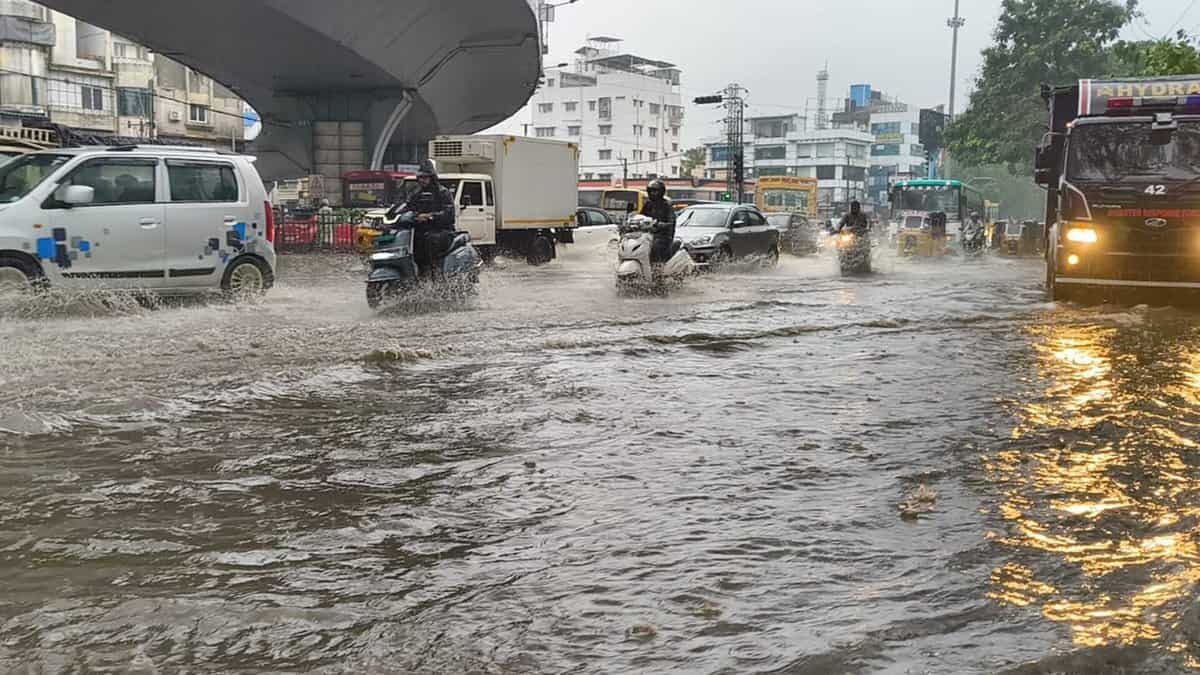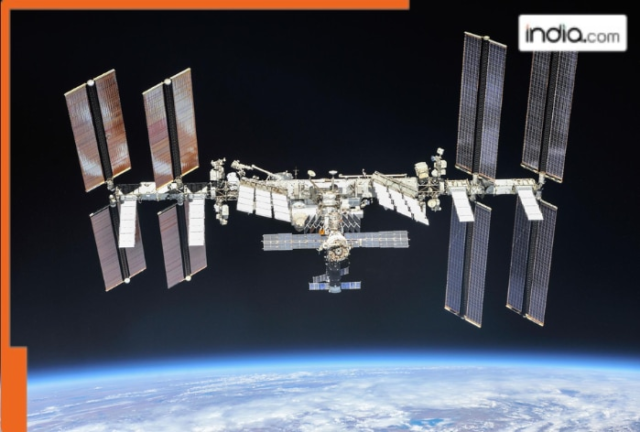Even though the public often called them astronauts, payload specialists were not selected through NASA’s formal astronaut program and didn’t receive full astronaut training.
Indian Air Force officer Shubhanshu Shukla is on track to create history as the first Indian to visit the International Space Station (ISS). He will be flying as part of the Axiom-4 mission, which is scheduled to launch on June 10th from the Kennedy Space Centre in Florida at 5:55 pm IST. The spacecraft is expected to dock with the ISS on June 11th at 10:00 pm IST.
Shukla will be one of four astronauts on this mission, which will use SpaceX’s Dragon spacecraft to reach the ISS. This moment marks a major step forward for India in space exploration and comes 41 years after Rakesh Sharma’s legendary trip to space aboard Russia’s Soyuz spacecraft in 1984.
The Axiom-4 Mission: A Global Crew
Shubhanshu Shukla, an officer from the Indian Air Force, will serve as the pilot for the upcoming Axiom-4 (Ax-4) space mission. The mission will be commanded by Peggy Whitson, a former NASA astronaut with vast experience in space. The other two members of the crew are Slawosz Uznanski-Wisniewski, an astronaut from Poland representing the European Space Agency (ESA), and Tibor Kapu, an astronaut from Hungary.
Axiom Mission 4 (Ax-4) Crew: Diverse Expertise for Space Exploration
Peggy Whitson, born February 9, 1960, in Mount Ayr, Iowa, is an American astronaut and biochemist. She holds a Ph.D. from Rice University. Before NASA, she had no formal flying experience. With NASA, she spent 675 days in space, a U.S. record. Now with Axiom Space, she commands Ax-4, her fifth ISS mission.
Shubhanshu Shukla, born October 10, 1985, in Lucknow, Uttar Pradesh, is an Indian Air Force Group Captain and astronaut. A National Defence Academy graduate, he was commissioned in 2006. With over 2,000 hours of flying experience on aircraft like Su-30 MKI and MiG-21, he pilots Ax-4, his first ISS mission and first space travel experience.
Sławosz Uznański-Wiśniewski, born April 12, 1984, in Łódź, Poland, is a Polish engineer and ESA project astronaut. He holds M.Sc. degrees with honors from Łódź University of Technology and Université de Nantes (2008), and a Ph.D. from Université d’Aix-Marseille (2011). With no prior flying experience, he worked at CERN (European Organization for Nuclear Research) and STMicroelectronics. He’s a mission specialist for Ax-4, his first ISS mission and first space travel experience.
Tibor Kapu, born November 5, 1991, in Vásárosnamény, Hungary, is a Hungarian mechanical engineer and astronaut. He holds a master’s degree from Budapest University of Technology and Economics, specializing in polymer technology. With no prior flying experience, he worked in pharmaceuticals, logistics, and space radiation protection. Selected for the HUNOR program, he’s a mission specialist for Ax-4, his first ISS mission and first space travel experience.
The Evolution of Astronaut Selection
Cool Heads, Not Just Pilots: Early Space Programs
In the early days of space travel, most U.S. astronauts were selected from the military as test pilots. However, this wasn’t mainly because of their flying skills. Instead, it was because they were trained to stay calm and make quick decisions under extreme pressure—a vital quality for space missions.
The spacecraft used in programs like Mercury, Gemini, and Apollo didn’t need much flying or steering once they were in space. These capsules had very limited controls while orbiting, and they returned to Earth using parachutes, not by being flown like an aircraft. So, being a good pilot was less important than being mentally strong and prepared to handle emergencies.
Mercury Program: NASA’s first human spaceflight program (1958–1963), aimed to send a man into space and return him safely. It proved humans could survive space travel and paved the way for more advanced missions.
Gemini Program: Conducted between 1961 and 1966, the Gemini program focused on developing space travel techniques like spacewalks, long-duration missions, and docking spacecraft—essential skills needed for Apollo’s Moon landings.
Apollo Program: NASA’s most famous space program (1961–1972), Apollo achieved the first human Moon landing in 1969. It aimed to explore the Moon, test space travel technology, and demonstrate U.S. leadership in space during the Cold War era.
The Space Shuttle Era: Pilots and Specialists
In 1978, NASA brought in a major change with the launch of the space shuttle. Unlike earlier spacecraft, the shuttle acted like a laboratory and control center in space. But when returning to Earth, it didn’t use parachutes. Instead, it came down like a fast-moving glider and had to land on a runway, which was quite difficult to control.
Because of this, NASA started selecting two different types of astronaut candidates. The first group had to be experienced jet pilots, trained to fly the shuttle and later promoted to become mission commanders. The second group didn’t need to be pilots—though a few were. These candidates had strong science, engineering, or medical backgrounds and were trained to become mission specialists, working on experiments, research, and technical operations during space missions.
International Cooperation in Space
From 1992 onwards, as preparations began for future missions to the International Space Station (ISS), people from different countries were selected as international mission specialist candidates. These mission specialists were trained to handle important tasks during a space mission, including operating systems on the space shuttle or space station, managing experiments and equipment, and conducting spacewalks.
Specialized Roles in Space Missions
Beyond Astronauts: Payload Specialists
Apart from pilots and mission specialists, there was a third group of people who also flew on the space shuttle—called payload specialists. These individuals were chosen for specific missions because they had special knowledge about certain experiments or equipment.
Even though the public often called them astronauts, payload specialists were not selected through NASA’s formal astronaut program and didn’t receive full astronaut training. They were not considered career astronauts by NASA but were invited for specific missions because of their expertise, according to Britannica.
In the 1980s, even two U.S. Congress members flew on the space shuttle as payload specialists. One of the most well-known payload specialists was Christa McAuliffe, a schoolteacher selected for the “Teacher in Space” program. Tragically, she was on board the Challenger space shuttle, which exploded during launch.
Requirements and Selection Process
People who want to become astronauts can come from either civilian backgrounds or the military. Except for those applying as education mission specialists, everyone must have a college degree in engineering, life sciences, physical sciences, or mathematics. Both men and women can apply, either as pilot candidates or mission specialists.
To become an astronaut, a person must submit a formal application to NASA or ISRO in India and go through a strict selection process. This includes personal interviews, medical tests, and an introduction to the space program to assess their fitness for the role.
NASA says that astronaut candidates should be team players who can also work independently when needed. They are expected to have a wide range of skills and be flexible, confident, and reliable. Most people chosen by NASA to become astronaut candidates are usually in their mid-30s.
There are also height requirements. The maximum height allowed is 6 feet 4 inches (193 cm), and the minimum height is 4 feet 10.5 inches (149 cm). However, those applying as pilots must be at least 5 feet 4 inches (163 cm) tall.
Training for Space: Simulators to Reality
Astronauts train using simulators and special equipment that replicate real mission conditions. They practice handling different situations, including emergencies, so they are fully prepared for any challenge during their time in space.
Once an astronaut is chosen for a mission, they start training with their fellow crew members for several months. If the mission involves a long stay on the International Space Station (ISS), they may also need to learn Russian, since Russian is one of the main languages used on the ISS.
After the space shuttle program ended and long-term missions on the International Space Station began, the difference between pilot astronauts and mission specialists no longer mattered. Now, astronauts from any background can be chosen for ISS missions.
When astronauts are not on a space mission, they remain active by working in mission control, communicating with astronauts in space, or taking on leadership and management responsibilities within NASA.
The Russian Approach: Cosmonauts
In the Russian space program, cosmonauts have usually been divided into two main roles—mission commanders, who are mostly trained pilots, and flight engineers, who handle technical tasks during the mission.
Just like in the United States, people who want to become cosmonauts must go through a strict and detailed medical check-up that can take several months to ensure they are physically and mentally fit for long stays in space.
Cosmonaut candidates train at the Yury Gagarin Cosmonaut Training Centre in Star City, near Moscow. Their training begins with two years of basic lessons about space travel. After completing this, they are officially called cosmonauts. Next, they spend up to two more years learning how to use space equipment and systems, preparing for future space missions.
Only after completing all the basic and advanced training can a person be assigned to a specific space mission. Even then, they must go through another year or more of special training to get fully ready for launch.
Unlike the U.S. astronaut training before the late 1990s—which mainly focused on specific tasks for short space shuttle missions—the Soviet, and now Russian, training system always focused more on general spaceflight knowledge and problem-solving skills needed for long stays in space. However, since the late 1990s, the U.S. has also shifted its training style to provide broader training similar to the Russian approach.
Global Space Programs and Space Tourism
Besides the astronaut training programs in the United States, Russia, and China—the only countries with their own rockets and spacecraft to send humans to space—other countries also have astronaut training systems. The European Space Agency (ESA), which includes 22 countries, along with Japan and Canada, have their own government-sponsored astronaut training programs, which follow methods similar to NASA.
India is also developing its human spaceflight program under ISRO (Indian Space Research Organisation). For its upcoming Gaganyaan mission, Indian astronauts (Gagannauts) have already undergone initial training in Russia, and India is building its own astronaut training facility near Bengaluru for future missions.
People chosen by other countries to go to space usually train with NASA, Roscosmos (Russia’s space agency), or both. Those preparing for International Space Station missions may also receive specialized training in Europe, Japan, or Canada, especially to learn how to operate space station equipment from those countries.
Some people have traveled to space as private citizens, not as part of a government space program. A few were sponsored by their employers—for example, Japanese TV journalist Akiyama Toyohiro, who went to the Mir space station in December 1990 to report from space.
Others paid for the trip themselves. These include Dennis Tito (USA), Mark Shuttleworth (South Africa), Gregory Olsen (USA), Anousheh Ansari (born in Iran, living in the USA), Charles Simonyi (born in Hungary, living in the USA), Richard Garriott (UK-born, USA-based), and Guy Laliberté (Canada). Between 2001 and 2009, they all made short visits to the International Space Station on Russian spacecraft, spending millions of dollars for the experience.
These travelers are officially called spaceflight participants, but they are also commonly known as space tourists, as reported by Britannica.
——-E.O.M
















































